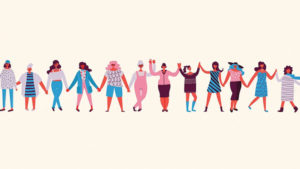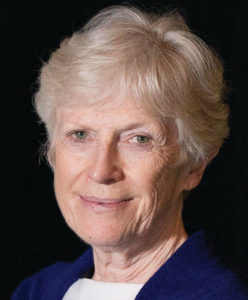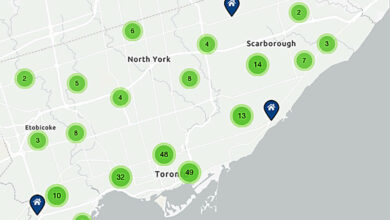Women of 2021
It’s 2021 and women are still “assigned” roles at home based solely on their gender – she is the caregiver (for everyone around her); she is the household economic manager; she is the mother; she is the one who ensures that the house is kept tidy (yes, men “help” nowadays, but the initiative and the “main role” in this area of cleaning is almost always the woman’s); she is the one who has to be available and always smiling for her husband. And it is this same woman who is also studying at a higher level (more women than men enrolled in our universities), who is a high-level athlete, who is a professional. And, almost magically, the woman not only manages to do everything, but almost always manages to do everything well?

The feminist movements played a crucial role in drawing attention to the absolute necessity of changing mentalities. They fought for women’s dignity and managed to achieve goals, even if not in their entirety. On the other hand, the movements that were generated around the denunciation of abuses of various kinds (sexual harassment, professional harassment, …), have also contributed to a widespread way for women to say “Enough”.
But… and there is always a “but”… the question remains – what about the men in this picture? What adaptations have they had to make to their personalities to live in this new reality? Are men now the dominated ones, instead of the “traditional” dominator? Are we reaching a point where men, for fear of being considered “abusers,” are even afraid to get close to women?
This week we had the opportunity to talk about these matters with two sociologists. Dr. Sylvia Bawa, an Assistant Professor at York University (sociology), a global sociologist whose research interests revolve around interconnections of globalization, structural inequality and discourses of culture and women’s rights in Sub-Saharan Africa and Dr. Pat Armstrong, a Canadian sociologist and distinguished research professor at York University who is also an author, co-author, or editor of over 25 books and dozens of book chapters and journal articles.
Milénio Stadium: Women are the majority of the Canadian population – 50.37% in 2020, according to the World Bank collection of development indicators. In practice, does the organization of Canadian society reflect this fact?

Dr. Sylvia Bawa: Sadly no. Women are still largely underrepresented in key decision-making sectors of the country, including in politics and government, and leadership in corporate and higher educational institutions among others. While the current liberal cabinet has parity, this is not reflected at the provincial levels. This picture is replicated around the world. For instance, UN Women reports low numbers of women in key decision-making sectors globally.
Dr. Pat Armstrong: Although some progress has been made, our labour force is still primarily divided into men’s jobs and women’s jobs and women are still primarily responsible for the daily household work, as well as for childcare. The pandemic has threatened many of the gains women have made as a result of their domestic responsibilities and the nature of their employment. Many of their jobs, such as restaurant work, could not be done remotely. In health and education, where women form the overwhelming majority of the labour force and where most are represented by unions, jobs remained throughout the pandemic but the demanding work and high stress levels took an enormous toll on their mental and physical health.
MS: The fact that they are also in the majority when it comes to university education, can we consider that this is a result of the fact that there are more women than men (i.e. it is proportional to the total population figures) or can we find another justification? Such as, for example, the need to have more training in order to assert themselves in society and have their merit recognized?
SB: You are right in both instances. The numbers are a reflection of the population dynamics. However, it is also the case that women need to do more to get better paying jobs and or get the same pay as their male counterparts. While this is the case, it is also important to examine the gender distribution in various fields of study. Women have inched only slightly into male dominated areas of study such as STEM. Women remain over-represented in fields considered more ‘feminine’ or suitable to women in terms of careers.
PA: Women have fought hard to gain entrance to post-secondary education, and especially to some of the professional programs like medicine and engineering. Although women are now a majority in colleges and universities and although they have made gains in male-dominated programs, post-secondary education is still largely divided into male and female programs. Women are most likely to be found in education and health programs and their numbers in trades programs are not increasing significantly. There are more women in STEM (science, technology, engineering, math and computers) programs but they are still a minority. Post-secondary education does have a significant impact on access to employment and pay, although a pay gap remains for university graduates. More racialized, Indigenous and newcomer women are also found in colleges and universities and this too helps them gain access to better employment and pay but they remain disadvantaged not only compared to men but also to Caucasian women born in Canada.
MS: Is this greater prevalence of women in positions or professions previously considered “masculine” the result of years of struggles by feminist movements for equality? Can we affirm that?
SB: Absolutely! Over the years, feminist activism has helped to open up spaces for women in all professions and or rather, worked to remove the barriers. We still have a long way to go in terms of attitudinal changes, but we’ve come a long way. It is important to mention that in removing these barriers, it has created opportunities also for men to enter professions previously considered ‘feminine’. Generally, we are questioning more and more how gender binary thinking has negatively impacted our development as society.

PA: Women have made the most significant employment gains in areas where hiring is primarily based on formal credentials and these gains are undoubtedly the result of the feminist movement, including the women in unions. Medicine and pharmacy are the most obvious examples, with women now the majority in these occupations. However, these occupations themselves remain divided into male and female jobs, with women accounting for two thirds of those in family practice and men two-thirds of the surgeons.
The feminist movement has also struggled hard for pay and employment equity and thousands of women are in a better position as a result. However, it remains a constant struggle and some women are continually left out. For example, the Ontario government has introduced wage controls for the broader public sector but the police and firefighters -most of whom are men-are excluded while the and teachers -most of whom are women-are facing wage controls.
MS: In spite of everything, women are still associated with being mainly responsible for taking care of the children and most of the domestic chores. Is this a sign that there is still some way to go in this struggle for equality?
SB: Again, yes and spot on. There is still a lot of work ahead of us. The recent #metoo movement has shown that even when we have made some in-roads, workplaces can still be hostile to women. We are only at the beginning of truly transforming institutions and systems to recognise the equality of women in all domains of life. On the matter of care-work and what we also refer to as social reproduction labour, we have not made as much progress and the pandemic has certainly eroded some of the modest gains we made. Even when women are able to outsource domestic labour, they employ other women (mostly racialized and low-class women) to do the work. We have been socialised into thinking of women as best suited to this kind of labour. So to answer your question, yes there is still a long way to go. The mental load alone significantly and disproportionately impacts women and is a source of major stress for women. In addition to policy changes, we also need to socialise our children differently. The traditional stereotypes we see in the media, books etc have to change to be more inclusive.
PA: No question. However, maybe men learned to do more as they worked at home during the pandemic. The new federal childcare program will help women but will not necessarily change who provides care at home.
MS: Men, however, still hold the majority of political decision-making positions and top positions in large companies. How can this be justified?
SB: Good question. This cannot be justified in a democratic society. Mostly, we treat only the symptoms of these systemic issues. For instance, while we are seeing more and more women in politics, we have done little to transform an institution that has traditionally been masculine. Instead of making it a more welcoming space for all people, including changing institutional culture, we expect women to ‘fit in’ and become one of the ‘boys’ as it were. We need wholistic approaches that also address intersectional issues such as race, class, disability, age etc. So, the question is, how do we work to make these institutions more democratic? In other words, when we think of diversity, including gender diversity, we should move beyond the visual politics of seeing more women or more racialized people etc. Our thinking also has to fundamentally change to accommodate women and other minorities in the workplace.
PA: It can’t be justified but can be explained by women’s work at home and in the labour force as well as by attitudes towards women and their limited access to things like funding.
MS: Are women still discriminated against professionally because of their gender?
SB: Yes; without question! As indicated earlier, the culture of most workplaces has not changed. We expect women to meet standards only particular groups of men can meet in part because they are not based on merit, but more on socio-cultural norms peculiar to a group of people (men). For instance, take the revelations of sexual harassment in recent years as an example (#metoo).
Various studies also corroborate the fact that women are assessed more harshly than their male counterparts across all professions. This is even more so in traditionally male-dominated fields.
PA: Yes, especially in male jobs in the trades but certainly not only there. As we are made more and more aware, women also face sexual harassment wherever they are. They face lower pay and conditions that make it harder for them to participate and advance
MS: Following the media’s widespread reporting of cases of professional or even sexual harassment, some men have complained that they feel constrained in the way they deal with women, for fear of being misinterpreted and accused of sexual harassment or offences. What implications might this have for the man/woman relationship?
SB: This is not surprising. They are responding to the changes that are occurring in the workplace. The period of adjustment may be hard for some men but in the end we will have a more inclusive workplace. In any case, if they are behaving ethically, then they have nothing to worry about. Think about it in relation to similar changes that are occurring with more diversity generally in the workplace. We all have to be more aware of the needs of others work hard at ensuring that those who are not like us can also thrive in the workplace. As people become more knowledgeable about the histories of exclusion, racial, class and sex discrimination, the better our chances of creating more inclusive spaces will be.
PA: I think it is always hard to learn new ways of seeing and behaving. We have to take care to make it clear to both women and men what is and is not acceptable.
Catarina Balça/MS








Redes Sociais - Comentários